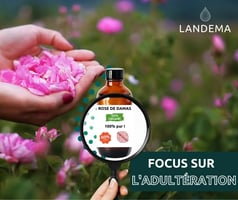GHS classification of essential oils: regulatory guide

january 31, 2023
What is GHS classification?
Have you ever heard of GHS classification? If not, we'll tell you all about it!
GHS stands for "Globally Harmonized System of Classification and Labeling of Chemicals". GHS (Globally Harmonised System of Classification and Labelling of Chemicals) replaces the European CLP Regulation.
It is an international system for labeling hazardous substances. Essential oils are concentrated extracts of volatile active ingredients. They must therefore be handled with care!
To prevent the dangers associated with the use of essential oils, we need to show their GHS classification.
In concrete terms, these are the red and white pictograms with a black design that you see on your product labels. In all, there are 9 different hazard pictograms:
GHS01: explosive material
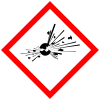
If this pictogram appears on your product label, it means that it contains substances liable to explode. This reaction can occur on contact with a spark, flame, heat, static electricity, shock or friction...
GHS02: flammable

This symbol means that the product may catch fire following contact with a flame, high temperature, spark or air.
GHS03: Oxidizing
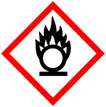
In accordance with the regulations, this pictogram appears on the labels of products which may start/aggravate a fire or explosion.
SGH04: gas under pressure
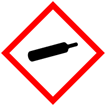
The pressurized gas pictogram highlights the presence of materials that can explode under heat, causing burns or injury.
GHS05: corrosive
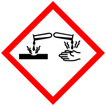
This GHS pictogram highlights products containing corrosive substances that can burn skin and cause eye damage, as well as damaging metal and wood, for example.
GHS06: toxic
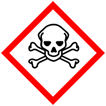
GHS06 identifies products containing toxic substances. These are harmful (they can cause vomiting, nausea, loss of consciousness...) or in the worst case fatal if they come into contact with the skin, are digested or inhaled.
GHS07: hazardous to human health/to the ozone layer
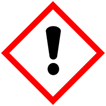
This exclamation mark pictogram highlights a product containing substances hazardous to human health or the ozone layer. They may cause irritation to the eyes, skin and respiratory tract. These materials also represent an environmental hazard. They can cause poisoning in large doses.
GHS08: Serious risk to human health
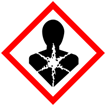
Identifies a product composed of materials that are carcinogenic and may harm fertility or the fetus. They are also toxic to certain organs and may cause allergic symptoms.
GHS09: Dangerous for the environment
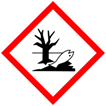
This means that the components of the essential oil in question are hazardous to the environment. This concerns the aquatic environment, fauna, flora, soil organisms and bees.
This is why it's important to handle essential oils with great care, and to be well-informed on the subject. Whether you're "Do it Yourself", blending or applying essential oils, it's essential to follow the recommendations for storage and use, to protect yourself and the environment.
For more information, or as a reminder, please refer to our guide to using essential oils.
We hope you have found this article useful, and we encourage you to pay close attention to the various pictograms on your essential oil, and more generally on all the products you buy and use.
Sources we've used to help you further your research:
Sécurinorme : https://www.securinorme.com
Ineris : https://www.ineris.fr


